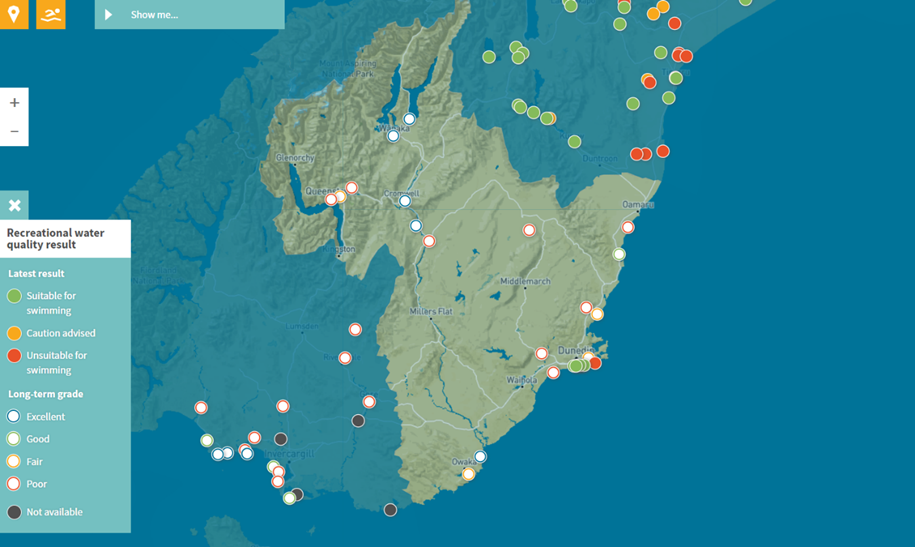ORC staff are waiting for results from further testing to confirm the alert level but feel confident in issuing a warning with the probability people will be out and about on the first weekend of summer.
“Given the staff observations this week, the previous history at the site and the continuous presence of cyanobacteria scums over the last week or so we decided the warning was warranted,” says ORC Scientist, Water Quality and programme lead, Helen Trotter.
This kind of algae is potentially toxic (and can be deadly) to both humans and animals. Dogs should be kept on a leash to steer them away from the water, and those visiting Butchers Dam for recreation should stay out of the water until it is confirmed safe to swim here.
Warning signs have been erected in the area to make visitors and residents aware that the water at Butchers Dam is unsafe for swimming, drinking and it is recommended to keep pets and stock away.
To find the latest toxic algae sightings, go to: www.orc.govt.nz/toxicalgaesightings


The ORC team visits sites weekly to take samples, the results of which are posted to LAWA.

A screenshot of the map on LAWA’s website showing favourite swimming spots throughout Otago.
“Plenty of other council monitoring programmes across New Zealand continue to grow, with almost 800 recreational swim sites now on the site.”
People can find out if a swim area is safe on LAWA, by clicking on the swimming icon on the orange box, top left, or by selecting the menu option under the search bar that says, “Can I swim here?”
This way people can search for their local water ahead of a visit and plan their trip with the latest information. The map will show spots which are suitable, or not, for swimming using the handy traffic light system.
As well as test results the LAWA website has lots of useful factsheets, which can be found using the search bar, including the swim safe checklist and how to spot toxic algae.
